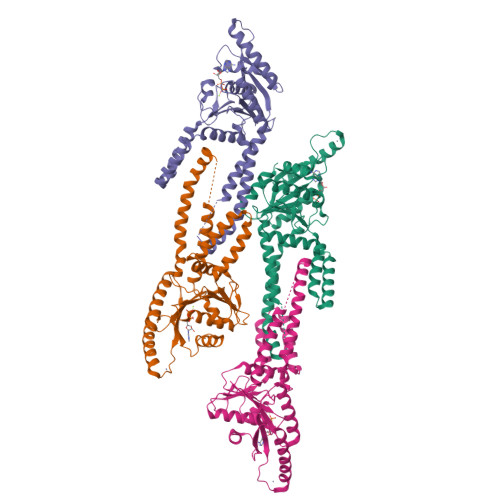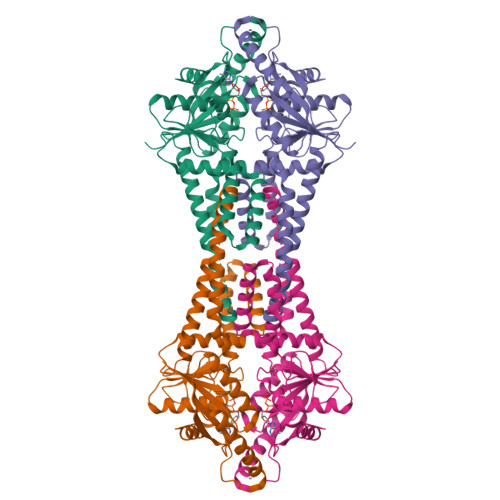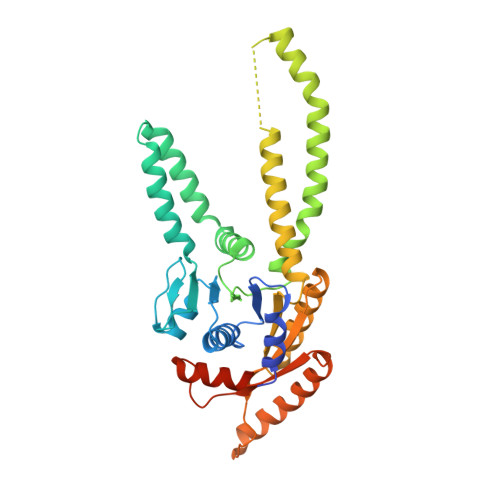Tail-anchor targeting by a Get3 tetramer: the structure of an archaeal homologue.
Suloway, C.J., Rome, M.E., Clemons, W.M.(2012) EMBO J 31: 707-719
- PubMed: 22124326
- DOI: https://doi.org/10.1038/emboj.2011.433
- Primary Citation of Related Structures:
3UG6, 3UG7 - PubMed Abstract:
Efficient delivery of membrane proteins is a critical cellular process. The recently elucidated GET (Guided Entry of TA proteins) pathway is responsible for the targeted delivery of tail-anchored (TA) membrane proteins to the endoplasmic reticulum. The central player is the ATPase Get3, which in its free form exists as a dimer. Biochemical evidence suggests a role for a tetramer of Get3. Here, we present the first crystal structure of an archaeal Get3 homologue that exists as a tetramer and is capable of TA protein binding. The tetramer generates a hydrophobic chamber that we propose binds the TA protein. We use small-angle X-ray scattering to provide the first structural information of a fungal Get3/TA protein complex showing that the overall molecular envelope is consistent with the archaeal tetramer structure. Moreover, we show that this fungal tetramer complex is capable of TA insertion. This allows us to suggest a model where a tetramer of Get3 sequesters a TA protein during targeting to the membrane.
Organizational Affiliation:
Division of Chemistry and Chemical Engineering, California Institute of Technology, Pasadena, CA 91125, USA.




















